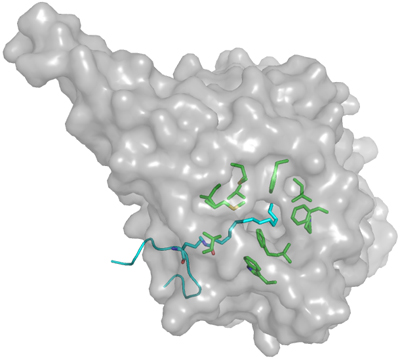Immune response linked to key enzyme
By Krishna Ramanujan

A previously unknown function of a family of enzymes familiar to biologists may contribute to scientists’ understanding of signaling molecules involved in the body’s immune response and could help in the treatment of such diseases as rheumatoid arthritis and cancer.
The family of enzymes, called Sir2, has been extensively studied for their role in aging.
The research, published April 4 in the journal Nature, was led by senior author Hening Lin, associate professor of chemistry and chemical biology. Lin and colleagues reported that the enzyme Sirtuin-6 (SIRT6) promotes the secretion of a signaling molecule called tumor necrosis factor-alpha (TNF), which is important for triggering immune responses in mammalian cells.
Rheumatoid arthritis, for example, is associated with is an overabundance of TNF. The molecule also promotes cancer cell death. The study found that SIRT6 promotes TNF secretion by removing long-chain fatty acyl groups from protein lysine residues.
It was not previously known that SIRT6 could play this key chemical role in the TNF promotion process. Based on the findings, researchers may one day look to manipulate SIRT6 in therapies to treat diseases.
This is the first study to explain how such long-chain fatty acyl groups are removed in mammalian cells.
“This long-chain fatty acyl lysine modification was reported 30 years ago, but no one knew its physiological function, so our finding helps explain that,” Lin said.
The study was funded in part by the National Institutes of Health. Co-authors include researchers from the University of Hong Kong, Rockefeller University and Harvard Medical School. The study’s lead authors were Hong Jiang, research associate, Saba Khan, graduate student, both in Lin’s lab, and Yi Wang, a researcher at the University of Hong Kong.
Media Contact
Get Cornell news delivered right to your inbox.
Subscribe